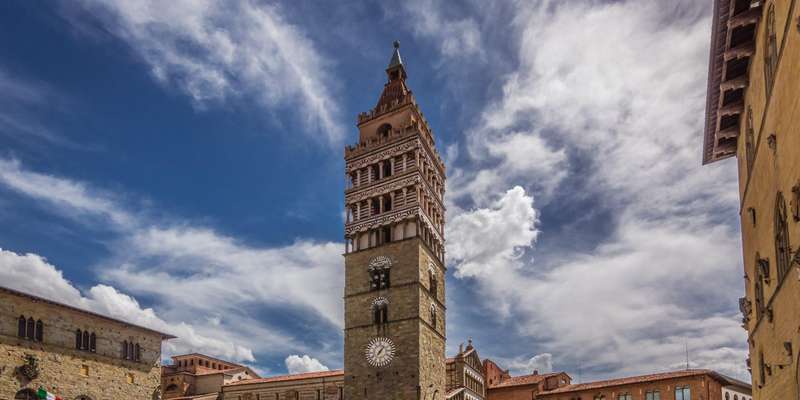- Home
- Useful Tips
- Pistoia's historic center walking route
Exploring Pistoia's historic center can feel overwhelming without proper guidance. Many visitors miss its authentic charm by following generic itineraries that overlook hidden courtyards, artisan workshops, and centuries-old trattorias tucked behind unassuming facades. Over 60% of day-trippers spend less than two hours here – barely scratching the surface of what locals consider Italy's best-preserved medieval town. The maze-like Via degli Orafi or the unexpected greenery of Palazzo Comunale's hanging gardens often go unnoticed. Worse still, poorly timed visits collide with midday closures of key sites like the San Zeno Cathedral baptistery. This leaves travelers frustrated, their experience reduced to crowded piazzas rather than the intimate atmosphere that makes Pistoia special. Understanding these pain points transforms how you engage with the city's layered history, from Etruscan roots to Renaissance splendor.


Navigating Pistoia's layout without wasting steps
Pistoia's concentric street pattern radiates from Piazza del Duomo, but the most rewarding discoveries happen when you move beyond this central hub. Start early at the outdoor market (weekdays only) to witness daily life before crowds arrive, then let Via Roma guide you northwest toward lesser-known sights. The key is alternating between main arteries and narrow vicoli – these alleyways reveal surprise viewpoints like the archway near San Bartolomeo that frames perfect Duomo photos. Locals recommend a figure-eight walking pattern: first loop around ecclesiastical buildings near the center, then explore civic architecture toward Via Cavour. This rhythm ensures you encounter both grand monuments and quiet corners where 13th-century tower houses still stand. Watch for subtle坡度 changes underfoot; the slight incline toward Ospedale del Ceppo signals you're entering the historic medical district with its famous della Robbia ceramics.
Timing your walk to experience Pistoia's living traditions
The difference between a good visit and an extraordinary one often comes down to syncing with local rhythms. Arrive before 10:30am to see artisans opening their botteghe along Via degli Straccioni, where generations-old workshops create handmade leather goods. Time your Piazza della Sala arrival for 11am when elderly residents begin their daily passeggiata – this is when the square's medieval well becomes a social hub revealing authentic community life. Many travelers miss the 3pm bell at San Giovanni Fuorcivitas, whose unique tone has marked prayer times since 1345. For evening walks, target Thursdays when bookshops and wine bars host aperitivo culturali combining Renaissance poetry readings with local Montalbano wines. These unpublicized moments matter more than checking off landmarks; they're when Pistoia's UNESCO-recognized intangible heritage comes alive through spontaneous conversations with goldsmiths, butchers, and friars who've maintained traditions for decades.
Decoding architectural details most visitors overlook
Pistoia's buildings tell layered stories if you know where to look. The striped marble bands on cathedral walls aren't merely decorative – their alternating white Carrara and green Prato stone symbolized medieval political alliances. Train your eye upward to spot 'murder holes' above doorways on Corso Silvano Fedi, remnants of inter-family feuds among 14th-century merchants. The most revealing details hide at eye level: search for scratched measuring rods etched into Palazzo dei Vescovi's pillars, used by textile traders in the 1200s. Even pavement stones have secrets; hexagonal patterns near Sant'Andrea mark ancient pilgrimage routes. Local historians suggest focusing on one material per walk – perhaps tracking all visible terracotta della Robbia reliefs or noting how iron torch holders evolved from functional to ornate designs. This approach turns random facades into a chronological scavenger hunt, with each architectural element adding context to Pistoia's role in Tuscany's development.
Where to rest and refuel like a Pistoiese
Strategic breaks transform your walking experience, especially when timed with Pistoia's culinary clock. Mid-morning, follow office workers to Pasticceria Glori for cecina (chickpea flatbread) paired with vin santo – a combination locals have eaten since the 1800s. For lunch, seek family-run spots like Osteria dello Stagno where handwritten menus reflect that day's market haul. Their pappardelle with wild boar ragu fuels afternoon exploration better than tourist-trap pizzerias. The smartest walkers time cathedral visits for 4pm, then cross to Bar Caffè Duomo for its secret upstairs terrace with Duomo views. As evening falls, join residents circling the octagonal Battistero; this 30-minute ritual combines digestion with admiring the sunset's glow on Verrocchio-inspired angels. These pauses aren't just about eating; they're curated moments that let you absorb neighborhood personalities, from the intellectual vibe near Collegio Fabroni to the lively banter at market-stall-turned-wine-bar Il Pozzo dei Desideri.
